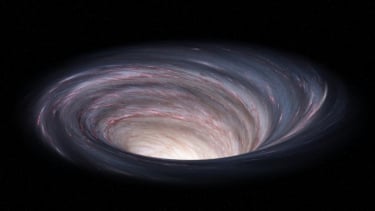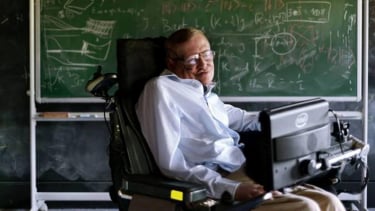Check out Some Predictions by Stephen Hawking Proven True
- U-Report
VIVA – Stephen Hawking is one of the greatest theoretical physicists of modern times. He is best known for his media appearances and his lifelong battle against the illness. Beginning with his doctoral thesis in 1966, his groundbreaking work continued unabated until his final study in 2028 was completed just days before his death at the age of 76.
Hawking worked in the intellectual field of physics and his theories often seemed strange at the time he formulated them. However, it was slowly accepted into the scientific mainstream with new supporting evidence coming in all the time.
From his amazing thinking about black holes, and his explanation of the simple beginning of the universe, here are some of his theories that have been proven come true and some still in doubt, as quoted from the Live Science website, Saturday, December 3, 2022.
Big Bang
Ilustrasi alam semesta.
- www.pixabay.com/WikiImages
Stephen Hawking began his success with a doctoral thesis written when there was a heated debate between two competing cosmological theories, the Big Bang and the Steady State. Both theories accept that the universe is evolving. In his thesis, Hawking showed that the Steady State theory was mathematically contradictory.
Instead, he argued that the universe began as a very small and very dense point m, called a singularity. Today, Stephen Hawking's description is almost universally accepted among scientists.
Black Hole is Real
Lubang hitam atau black hole.
- Russia Today
Hawking's name is associated with black holes, another singularity that forms when a star completely collapses under its gravity. This mathematical curiosity arose from Einstein's general theory of relativity and had been debated for decades when Stephen Hawking turned his attention to it in the early 1970s.
According to an article in Nature, his genius was to combine Einstein's equations with those of quantum mechanics, turning what was previously a theoretical abstraction into something that looked like it existed in the universe.
The latest evidence came to light when the Event Horizon Telescope obtained a live image of the supermassive black hole lurking at the center of the giant galaxy Messier 87.
Radiation of Hawking
Stephen Hawking
- Facebook/Jaime Travezan
Black holes get their name because their gravity is strong of photons or particles of light cannot escape from them.
Applying quantum theory, he realized that some of these photons would appear to radiate from the black hole. This is now known as Stephen Hawking radiation and was recently confirmed in a laboratory experiment at the Technion-Israel Institute of Technology.
Instead of a real black hole, the researchers used an acoustic analog, a "sonic black hole" from which sound waves cannot escape. They detected the equivalent of Hawking radiation, matching the physicist's predictions.
Ancient Black Holes
Black holes are created by the gravitational collapse of pre-existing material, such as stars. But some may have been created spontaneously in the early universe after the Big Bang.
Hawking was the first to explore the theory behind ancient black holes in depth. It turns out that they can have any mass, from very light to very heavy.
One interesting possibility considered by Stephen Hawking is that primordial black holes are mysterious dark matter that astronomers believe permeates the universe. But current observational evidence suggests that this is unlikely to happen.
Ilustrasi alam semesta.
- U-Report
One of the topics of Hawking tinkered with towards the end of his life was the multiverse theory, the idea that our universe, which began with the Big Bang, is just one of an infinite number of coexisting bubble universes.
In his final paper in 2018, Stephen Hawking wrote of "trying to tame the multiverse". He proposed a new mathematical framework that makes it finite. But any speculation about parallel universes is still an enigma and may not be investigated even soon.



























